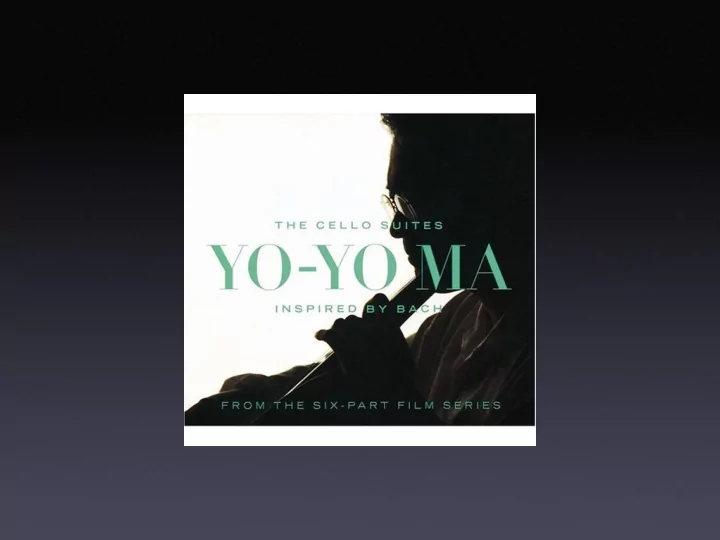

Inspired by Hitchin (“Physics”) CSIC, Madrid 8 September 61 AH
Topics ★ Monopoles ★ Hyperkähler quotients ★ Gauge theory ★ Generalized Geometry 3
Hyperbolic monopoles i.e., solutions of ⋆ F A = d A Φ on 3-dimensional hyperbolic space 4
There appears to be no good analogue of the -metric L 2 on the moduli space of Euclidean monopoles. Hitchin did construct such metrics for charge-2 centred monopoles, but their physical status is unclear. Other aspects of the theory are parallel, e.g. there is a twistor description, spectral curves, description in terms of rational maps, etc. In the theory of Euclidean monopoles, the motivation for the metric on the moduli space comes from Physics — geodesic motion is supposed to correspond to the dynamics of slowly-moving monopoles. 5
Question (Please justify your answer.) Does the physics of hyperbolic monopoles give clues about what structures might naturally exist on the moduli space of hyperbolic monopoles? (Contributed by Michael Singer.) 6
Hyperkähler quotients It is a well-known piece of physics folklore that one can associate a superconformal field theory to a Ricci-flat manifold. In addition, if the manifold has special holonomy, the superconformal field theory possesses an extended superconformal symmetry. 7
For example, • Calabi-Yau: Odake extension of N=2 SCA • Hyperkähler: N=4 SCA • G2 holonomy: SW(3/2,2) • Spin(7) holonomy: SW(2) 8
Questions Is there a CFT implementation of the hyperkähler quotient? ( Contributed by Martin Ro č ek) Can the construction of the CFT be made precise? (cf. chiral de Rham complex for Calabi-Yau’s) 9
Notice that the N=2 and N=4 SCAs exist for arbitrary values c=3d/2 of the central charge, for any integer d (interpreted as the dimension). The G2 algebra exists only for c=21/2 , corresponding to d = 7 . However the Spin(7) algebra exists for any central charge, and not just for c=12 . Is there a quotient construction for Spin(7) holonomy manifolds? Perhaps an octonionic quotient? If so, can it be implemented directly in the CFT? M////////G 10
Instantons in higher dimension • ( M n , g ) oriented • φ a coclosed 4-form • symmetric traceless map ˆ φ : Ω 2 ( M ) → Ω 2 ( M ), defined by ˆ φ ( F ) = ⋆ ( ⋆φ ∧ F ) 11
If ˆ φ F = λ F , for λ � = 0, then dF = 0 = ⇒ d ⋆ F = 0 Also true if F takes values in a vector bundle; e.g., as in the case of the curvature of a connection on a principal bundle: d A F A = 0 = ⇒ d A ⋆ F A = 0 12
Typical example: octonions with constant- coefficient Cayley form. Two possible choices of self-duality, but only one follows from supersymmetry, gives rise to an elliptic deformation complex, and has a moment map interpretation... Octonionic instantons 13
Questions Are there interesting geometrical structures on the resulting moduli space? Is there an ADHM-type construction for these “octonionic” instantons? How about Nahm-type equations for the corresponding monopole equations in 7 dimensions? 14
ΑΓΕ Ω ΜΕΤΡΗΤΟΣ ΜΗΔΕΙΣ ΕΙΣΙΤ Ω G e n e ☝ r a l i z e d ! 15
Generalized Geometry The moduli space of a Calabi-Yau compactification (without fluxes) of type II string theory is locally the product of the (complexified) Kähler cone and the complex structure moduli space, both of which have a special Kähler structure defined by a function called the prepotential. One of these two prepotentials is always protected from quantum corrections — which one depends on which theory we are compactifying: IIA or IIB. 16
Mirror symmetry interchanges these two moduli spaces and hence can be used to compute the quantum corrections of the unprotected prepotential. Turning on fluxes, one of the factors of the moduli spaces grows in dimension — again which one depends on whether we are in type IIA or IIB. This enlarged moduli space now admits a quaternionic Kähler structure. How can one compute the quantum corrections to, say, the metric of this quaternionic Kähler manifold? What replaces mirror symmetry? (Contributed by Xenia de la Ossa)
How does one compute quantum corrections to the c-map? ( Reformulated by Martin Ro č ek) It is known, however, that under certain natural Ansätze, supersymmetric flux compactifications of type II string theory require the ‘internal’ manifold to admit a generalized Calabi-Yau structure. Study the moduli space of generalized Calabi-Yau manifolds and compute its quantum corrections. Does (a generalized?) mirror symmetry help?
Construct examples of compact generalized Calabi-Yau manifolds in (real) dimension 6. (Contributed by Michela Petrini.) 19
ナイジェル先生、 お誕生日 おめでとうございます。
Recommend
More recommend